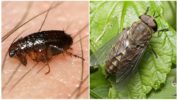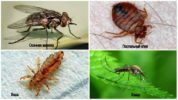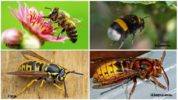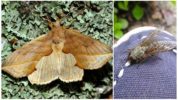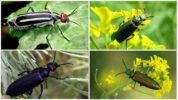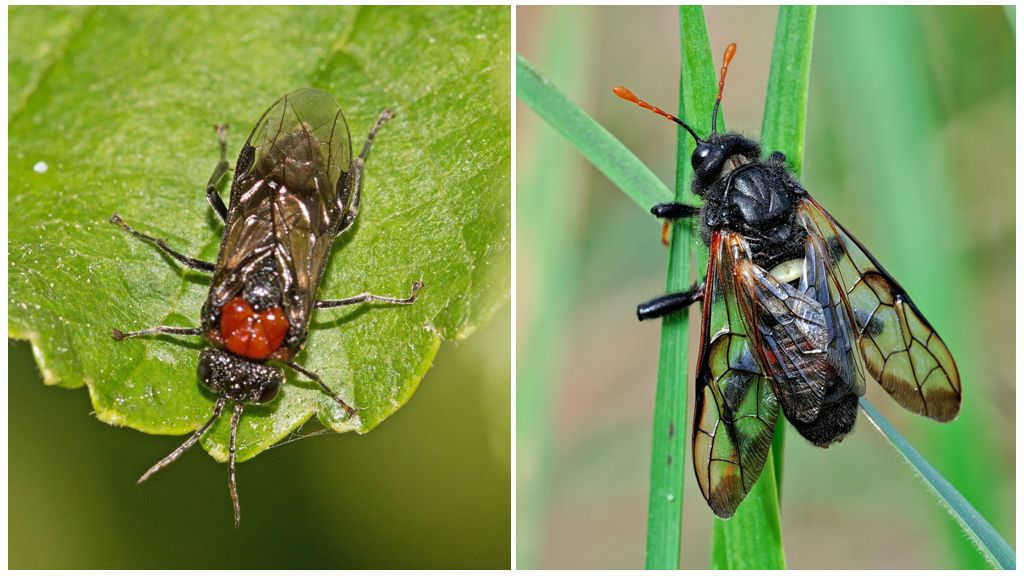- Flea and horsefly
- Dangerous insects
- Stinging insects
- Caliptra cornflower and gadfly
- Beetle bugs
Among the insects living in Russia, there are very few who are really dangerous directly to humans. In most cases, the dangerous insects of Russia are agricultural pests that can leave people without crops. Immediate danger to humans bloodsucking species and gadgets.
Insects dangerous to humans
In Russia, the main blood-sucking species:
- mosquitoes;
- horseflies;
- autumn lighter;
- bed bug;
- fleas
- lice.
Of this list, the most dangerous insects in Russia are fleas.
Fleas
Of the significant species of fleas in the Russian Federation there are 5 types:
Insects slightly differ from each other morphologically and do not differ at all when choosing a host for food. All of them can drink the blood of not only the titular hosts, but also other mammals. The danger to humans is not the bites themselves, but the infection that fleas bring into the blood.
Interesting!
The culprits of the plague and typhoid epidemics were not rats, but fleas. Drinking rat blood with flea pathogens then bit the person. Today, serious epidemics have begun to decline, but the most dangerous diseases on the planet have not yet disappeared.
In addition to plague with typhoid pathogens carry fleas:
- salmonellosis;
- pasteurellosis;
- brucellosis;
- hepatitis B and C;
- tularemia;
- encephalitis.
And this is not a complete list of all diseases. You can also get parasites from fleas. They carry simple organisms. If you accidentally swallow a flea, there is a chance to "plant" yourself a cucumber tapeworm.
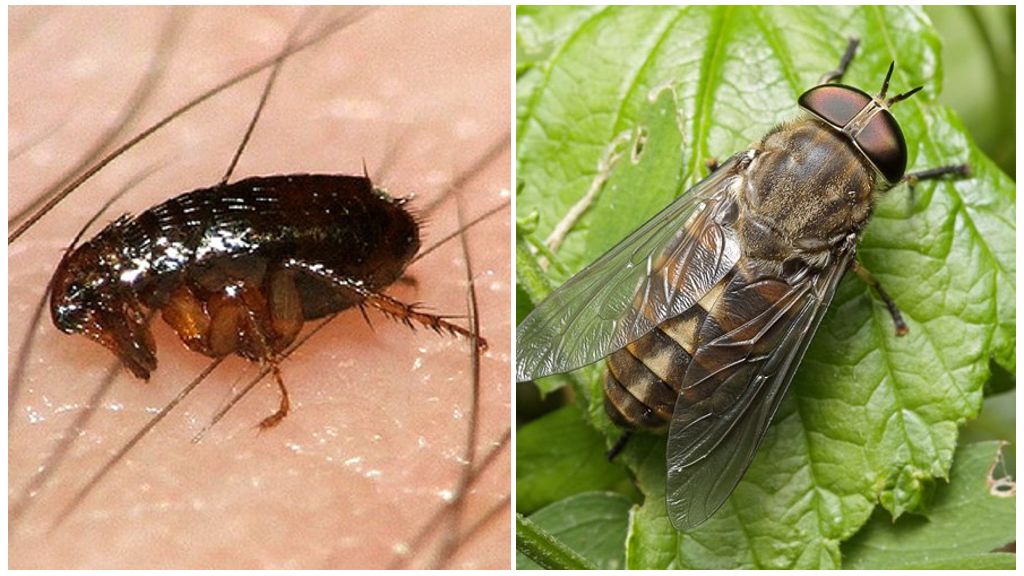
Gadgets
These are the largest flies that feed on blood. Gadgets able to feed on the blood of many mammals. A man is not included in the list of priority dishes, but a starving female can attack him. Due to the fact that horsefly can first drink blood from a wild mammal, and then bite a person, he carries:
- trypanosomiasis;
- tularemia;
- filariasis;
- anthrax.
On a note!
Horsefly bite dangerous for another reason. To prevent blood coagulation, the fly releases saliva into the wound with toxins and anticoagulants. Because of this, after a bite, local irritation occurs, and people with allergies can experience anaphylactic shock.
Autumn Lighter
Synanthropic fly, dangerous in that it is a physical carrier of staphylococci, anthrax, tularemia and other diseases. Bite lighter flies not toxic, but dangerous if pathogenic microorganisms enter the bloodstream.
Bed bug
The bites of this insect are not poisonous, but painful. Fact that bed bugs they can’t tolerate diseases, but presumably they can transmit the same types of diseases as other blood-sucking insects. Dangerous bug bite for people suffering from invertebrate saliva allergy.
Lice
These insects are carriers of typhus and relapsing fever. During any disaster, the population of these insects increases dramatically due to crowding. Lice bites cause severe itching in the scalp.
Mosquitoes
Inhabitants of the near-water spaces lead a nocturnal lifestyle, feed on the blood of many mammals and even reptiles. They can tolerate encephalitis, malaria, yellow fever and other diseases. For the Russian territory, the most relevant of these diseases is encephalitis. Mosquito bite dangerous to the same extent as a bite of horsefly. It contains anticoagulants that cause a local allergic reaction.
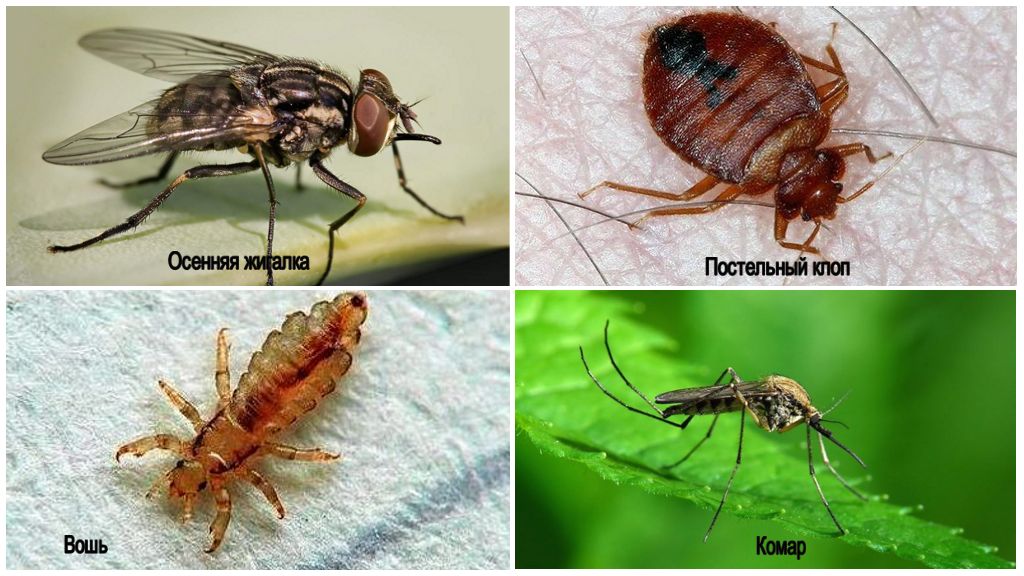
On a note!
In Siberia, insects, included in the totality of the concept of “vulture,” are dangerous not by toxicity, but by their multiplicity and thirst for blood. There are cases when people were killed in this way. They left them tied to a tree without clothes for the night. The next morning, a bloodless corpse remained from a man.
Caliptra Vasilistnikova
Recently, a new species of insect that feeds on blood has been discovered in Siberia. This is a nocturnal insect butterfly. Her proboscis is able to pierce human skin. If the caliper is not disturbed, it can drink blood for 20 minutes. Unlike other blood-sucking insects, males drink blood in a caliper. Females collect nectar. Scientists suggest that due to bloodsucking the male has the opportunity to share the salts she needs with the female. An insect bite is not dangerous.
Gadgets
Among the dangerous insects of Central Russia, one should also mention the subcutaneous, sheep and Russian gadflies. At the adult stage gadgets Do not bite at all, but this does not make them less dangerous.
Sheep specializes in laying eggs in the nasal cavities of goats and sheep. The Russian specializes in horses and donkeys. Females of these gadflies are viviparous and on the fly inject larvae into the eyes and nose of animals. The trouble is that they do not distinguish between a sheep, a horse, and a man.
Important!
Without exaggeration, these gadflies can be called one of the most dangerous insects in Russia. Eye contact larvae parasitize on the eyelid, mucous membranes of the eye and in the eyeball. Penetrated through the nose into the depths of the head, the larvae settle in the frontal and nasal sinuses, pharynx, ethmoid bone, forming abdominal myiasis.
The subcutaneous gadfly specializes in cattle. Its larvae in the process of development move to the backs of animals. From there it’s easier for them to go outside. Rarely, but a gadfly lays eggs on a person. The hatched larva begins to instinctively move up and penetrates the human brain.

Photo and description of poisonous insects in Russia
There are no deadly insects of the level of spiders in Russia, but there are stinging and biting bugs. To stinging include:
- bees;
- bumblebees;
- wasps;
- common hornet;
- Asian huge hornet.
Unlike bloodsuckers, these insects do not care about a person, although their bite is really poisonous and causes severe pain. Serious consequences after being bitten by these insects occur in people who are allergic to poison.
- Bee. Bee sting painful. The insect is poisonous. But the bees bite, only protecting themselves or the hive. To avoid the bee’s attention, it’s enough not to touch it.
- Bumblebee. The same applies to bumblebees. Bumblebee bite and the hornet is approximately equal in pain. But from bumblebee, local irritation of soft tissues is less than from hornet.
- Wasp. Likes to settle near human habitation. More aggressive than a bee. And more annoying. But the sting of a reusable wasp, and a person gets less poison than from a bee.
- Common hornet. Hornets belong to the wasp family and are the largest representatives of these insects. The size of the insect is 3.5 cm, which makes it bite quite dangerous for humans. But the same wasp is less aggressive than its smaller relatives. By hunting for other insects, the hornet does more good than it can harm its bite. Common hornet is common throughout the European part of Eurasia. It is found among insects of Western Siberia and the Urals.
- Hornet asian. This insect is truly dangerous to humans, not only because of its size.The huge Asian hornet also has highly toxic poison. The largest wasp in the world reaches a length of 5 cm. The length of its sting is 6 mm. When bitten, the sting penetrates deep into the soft tissues and the hornet injects a large dose of the poison. A hornet cannot kill with one bite, but if several insects sting at a person at the same time, the probability of death becomes very high.
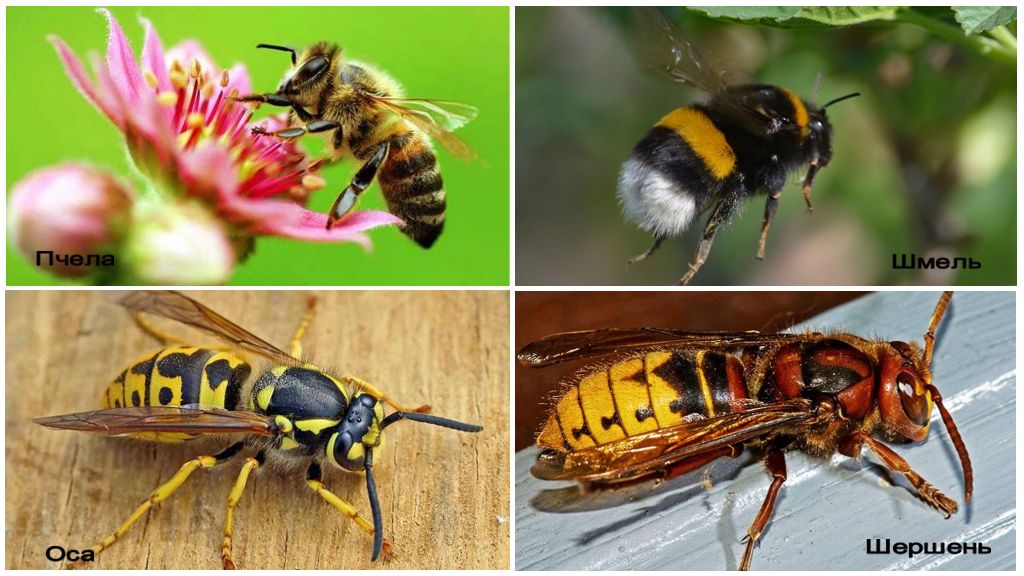
On a note!
For a person with an allergy, a single bite of an Asian hornet will be enough.
Dangerous beetles
Coleoptera is usually not serious. They may be feared, like any insects, but no one thinks that a bug can be truly dangerous. Among this detachment are poisonous or just painfully biting.
Navigator bugs
The name “boobies” speaks for itself. These are poisonous bugs that protect themselves with caustic mucus. Liquid is released through the pores of the body if the beetle is disturbed. Mucus corrodes the skin, leaving abscesses in this place. Several species live in Russia bugs buggers:
- Schaeffer’s outfit;
- red-headed plume;
- blackhead
- ash-tree shpanka (flypan fly);
- T-shirt purple / blue.
On a note!
Virulence ash binder used for medical purposes. Various preparations are prepared from it with the name "flypan fly".
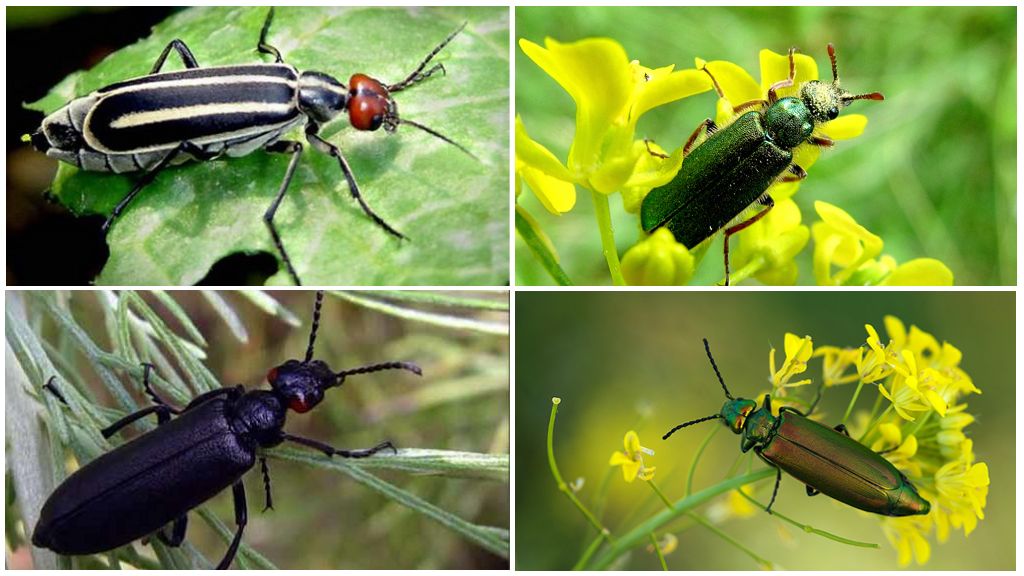
Bed bugs
For humans, only one species is dangerous - water bug bug. The proboscis of this bug is hard enough to pierce human skin. The bite is not dangerous, but it feels similar to a wasp. For such soreness of the bite, the gladysh is the second name "bug-wasp."
And the highlight of the program is a new dangerous insect found in Russia. According to one version, this is an escaped result of military experiments. A very successful draw that brought millions. On the video, an insect of a strange, eerie appearance. But no new bug was found. In fact, this is a giant water bug from the family of the Bialystomy. The video shows a male carrying offspring on his back.
Interesting!
Bialystomas are the largest insects in the world. In length, this bug can reach 10 cm. Its bite is very painful, and saliva works almost like poison. Enzymes in saliva are designed to dissolve the internals of the victim. Bedbug saliva in action is similar to the poison of a spider or snake.
This handsome man lives in tropical regions of Southeast and East Asia. You can find it in Russia only in one case: someone was tired of a live toy, and the bug was thrown into a Russian pond.
